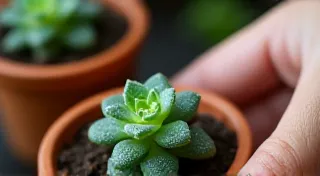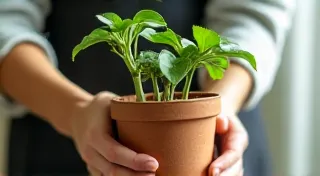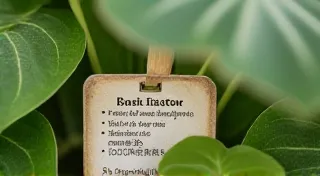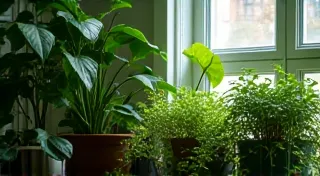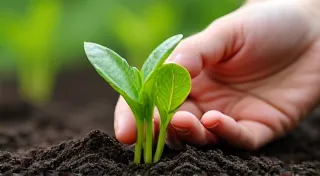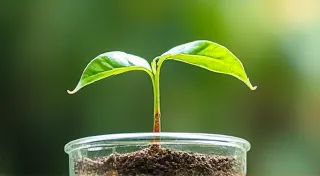Plant First Aid: Quick Tips for Common Houseplant Emergencies
Bringing plants into your home is a wonderful way to brighten your space and connect with nature. But even the most dedicated plant parents encounter problems. Don’t panic! Many common houseplant emergencies are easily remedied. This guide offers quick tips for tackling those unexpected plant crises and getting your green friends back on track. Understanding what’s happening and responding promptly can significantly improve your plant's chances of recovery. A large part of success is knowing how to care for them, including understanding the nuances of watering houseplants – a topic we’re quite familiar with!
Wilting – Is Your Plant Thirsty or Overwatered?
Wilting is a frequent cry for help from houseplants. But what's causing it? It could be dehydration or, surprisingly, overwatering! The difference lies in how the wilting looks.
Dehydration Wilting: Leaves will be limp and droopy, often feeling dry and crispy to the touch. The soil will be dry as well. Water thoroughly, allowing excess water to drain from the pot. Consider increasing humidity by misting or using a humidifier.
Overwatering Wilting: Leaves may look limp but feel soft and heavy. The soil will be consistently wet. Allow the soil to dry out completely before watering again. Ensure the pot has drainage holes. Overwatering can lead to root rot, which is a serious problem. Knowing the difference can mean the difference between a happy plant and a lost cause. For a more comprehensive guide, see our article on watering 101.

Yellowing Leaves – What's the Diagnosis?
Yellowing leaves, or chlorosis, can be a sign of several issues. Here's a breakdown of potential causes and solutions:
- Overwatering: As with wilting, consistently wet soil can suffocate roots and cause yellowing. Reduce watering frequency.
- Underwatering: Though less common, underwatering can also cause yellowing, especially on lower leaves. Water more regularly.
- Nutrient Deficiency: Yellowing, often with dark green veins, may indicate a lack of nutrients. Consider boosting your plant's diet with a balanced houseplant fertilizer during the growing season. You can even try making your own! Check out our guide to DIY plant food for some natural recipes.
- Too Much Sunlight: If your plant is getting scorched by direct sunlight, the leaves may yellow and burn. Move it to a location with softer light.
Pests are a common headache for houseplant owners. Early detection is key to preventing a full-blown infestation. They can sap your plant's energy and leave them looking stressed and unhealthy. It’s important to act quickly when you spot any signs of a problem.
Common Pests:
- Spider Mites: Tiny, almost invisible, but you're likely to notice fine webbing. Increase humidity and wipe leaves with a damp cloth. Insecticidal soap can also be effective.
- Mealybugs: These appear as white, cottony masses on stems and leaves. Dab them with a cotton swab dipped in rubbing alcohol.
- Aphids: Small, pear-shaped insects that suck sap from plants. Rinse them off with a strong stream of water or use insecticidal soap.
Leaf Drop – A Natural Process or Something More?
Losing a few leaves is normal, especially as plants mature. However, excessive leaf drop can signal a problem. It's rarely a single problem; often, a combination of factors leads to this concerning sign. Stress is a significant contributor, and understanding the causes is the first step to helping your plant recover.
Possible Causes:
- Sudden Environmental Changes: Moving a plant to a new location or experiencing a significant shift in temperature or light can cause leaf drop. Give your plant time to adjust.
- Drafts: Exposure to cold drafts can stress plants and cause them to drop leaves.
- Rootbound: If the roots have outgrown the pot, the plant may drop leaves. Repot the plant into a larger container. This can also impact nutrient uptake, leading to a cascade of problems.
Understanding the Importance of Light
Light is arguably the most important factor when it comes to houseplant health. Different species thrive in different conditions, so knowing your plant's requirements is crucial. Too little light can lead to weak growth, pale leaves, and an inability to properly photosynthesize. Conversely, too much direct sunlight can scorch leaves and cause discoloration. If you’re struggling to find the right spot, consider experimenting with different locations around your home.
Black Spots on Leaves – A Sign of Fungal Disease?
Black spots are often a sign of fungal diseases, especially in humid environments. These diseases are more prevalent during the warmer months when moisture levels are higher. Prevention is key, which includes providing adequate ventilation and avoiding overwatering.
What to Do:
- Improve Air Circulation: Increase airflow around the plant to prevent fungal growth.
- Remove Affected Leaves: Prune away any leaves with black spots to prevent the disease from spreading.
- Fungicide: In severe cases, you may need to use a fungicide specifically designed for houseplants.
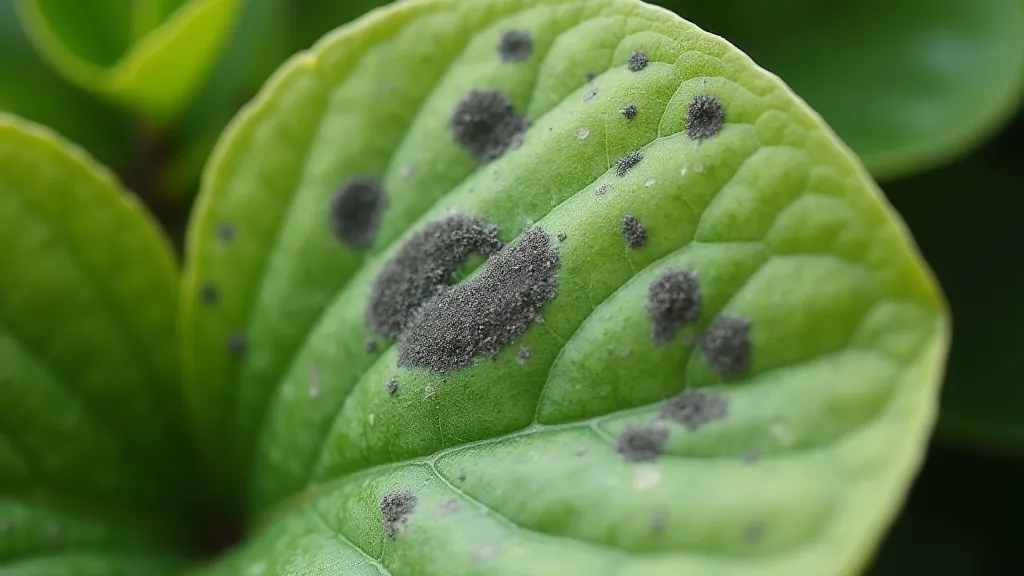
Troubleshooting Common Houseplant Problems
Beyond the specific issues covered above, there are a few general principles that can help you keep your houseplants thriving. Regular observation is paramount. Take a few minutes each week to inspect your plants for signs of stress, pests, or disease. Early detection can make a huge difference in the outcome.
Proper soil is also essential. It should drain well, but also retain enough moisture to support the plant’s roots. Re-potting your plants periodically is a good idea, especially as they grow larger. This allows you to refresh the soil and check for rootbound conditions.
Creating the Ideal Environment
While some houseplants are more tolerant of neglect than others, all plants benefit from a consistent and favorable environment. Factors like temperature, humidity, and light all play a role in their overall health and well-being. Try to mimic their natural habitat as closely as possible.
Remember, observing your plants regularly and responding promptly to any signs of distress can significantly increase their chances of thriving. Don's be afraid to experiment and learn what works best for your green companions!
